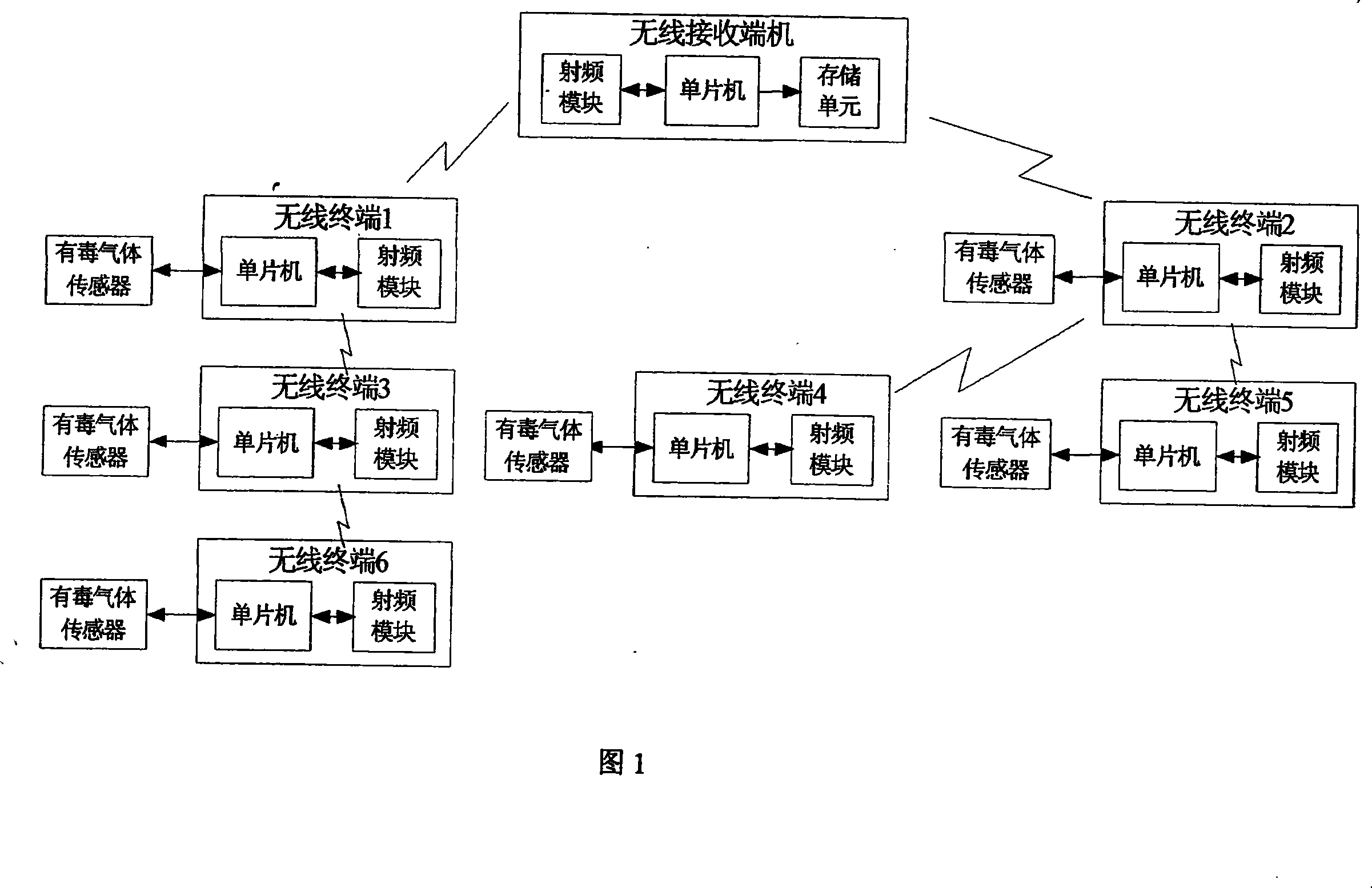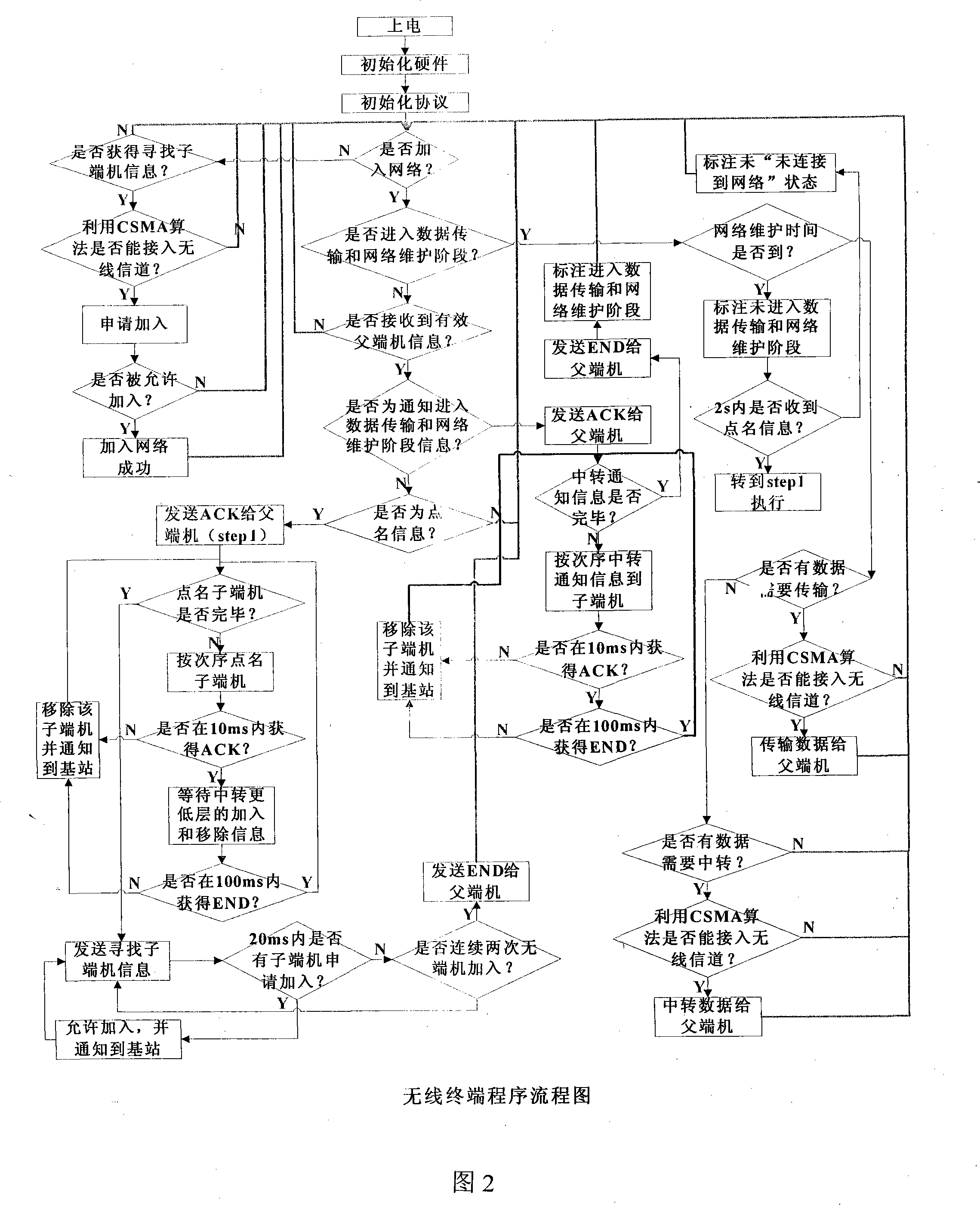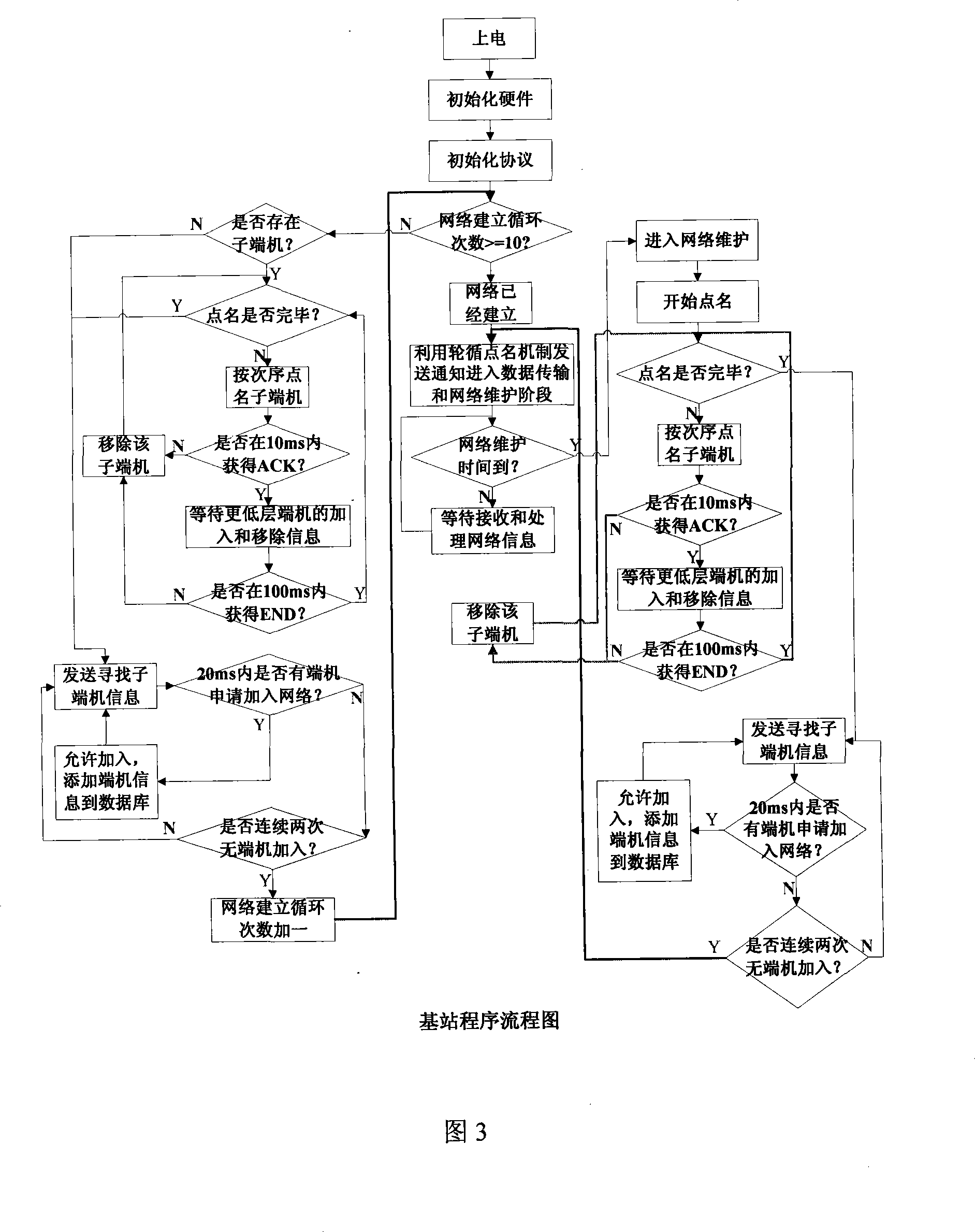A wireless sensor network system for poisonous gas detection
A wireless sensor, toxic gas technology, applied in transmission systems, digital transmission systems, data exchange networks, etc., can solve the problem of inability to determine the source of toxic gas leakage and its diffusion trend.
- Summary
- Abstract
- Description
- Claims
- Application Information
AI Technical Summary
Problems solved by technology
Method used
Image
Examples
Embodiment Construction
[0010] The present invention will be further described below in conjunction with accompanying drawing.
[0011] The invention is a self-organized multi-hop wireless sensor network system for poisonous gas detection, which is composed of a large number of wireless terminals and a wireless receiving end machine. The wireless terminal is paired with the toxic gas sensor, connected to the control unit through the RS-232 serial port, responsible for reporting the detection results of the paired toxic gas sensor, and relaying and forwarding for other wireless terminals around it. The wireless terminal is powered by a battery; wireless The receiver is responsible for system coordination, display and storage of sensor detection status information, multi-node information fusion processing for all reported data, analysis of toxic gas leakage sources and diffusion trends, and power supply through wired methods.
[0012] The self-organized multi-hop wireless sensor network composed of the...
PUM
 Login to View More
Login to View More Abstract
Description
Claims
Application Information
 Login to View More
Login to View More - R&D
- Intellectual Property
- Life Sciences
- Materials
- Tech Scout
- Unparalleled Data Quality
- Higher Quality Content
- 60% Fewer Hallucinations
Browse by: Latest US Patents, China's latest patents, Technical Efficacy Thesaurus, Application Domain, Technology Topic, Popular Technical Reports.
© 2025 PatSnap. All rights reserved.Legal|Privacy policy|Modern Slavery Act Transparency Statement|Sitemap|About US| Contact US: help@patsnap.com



